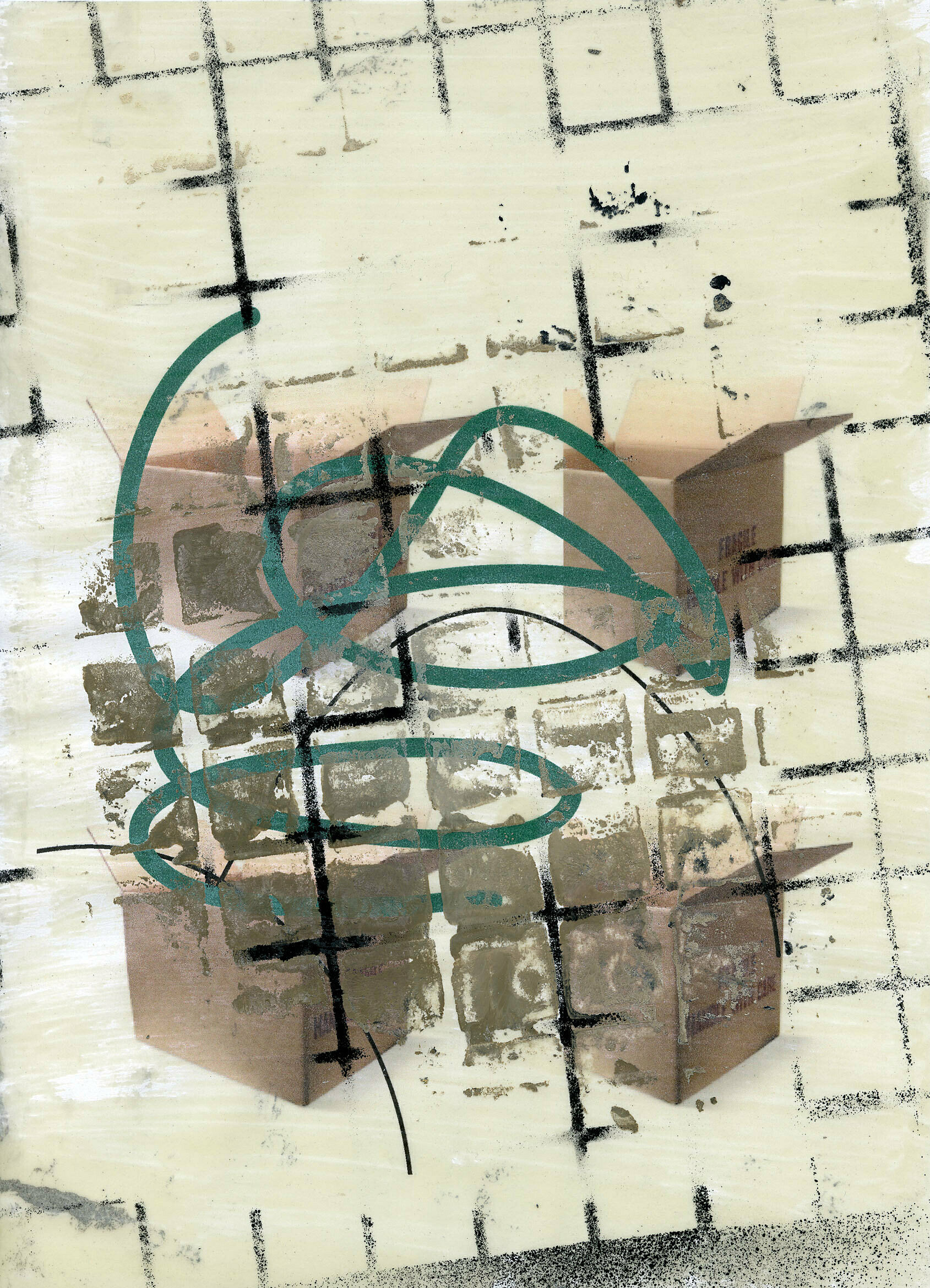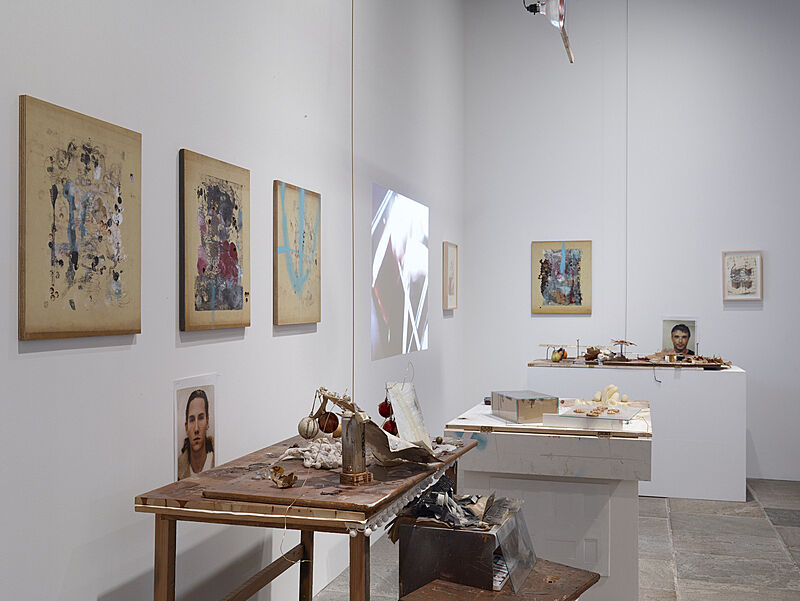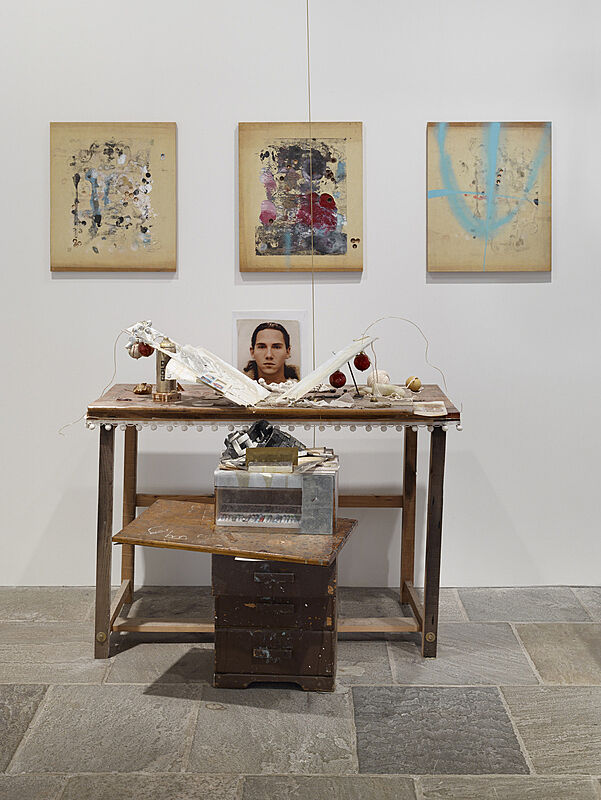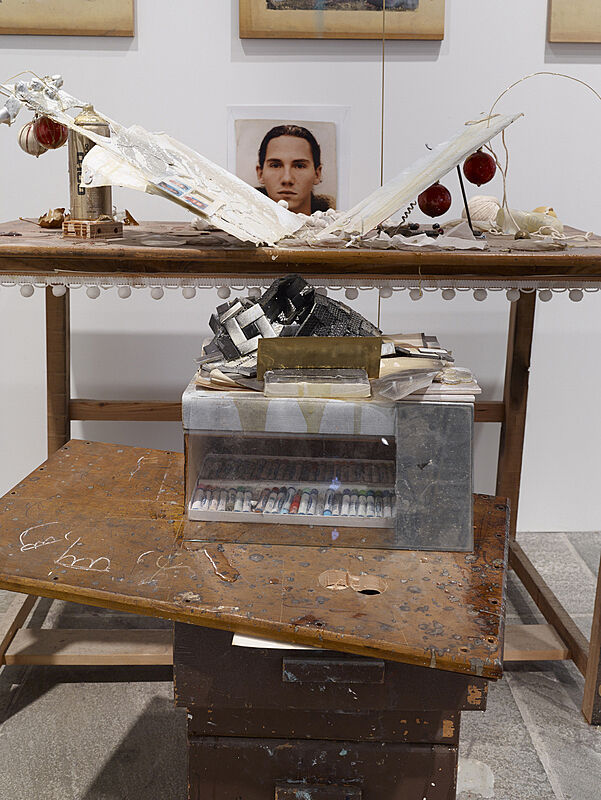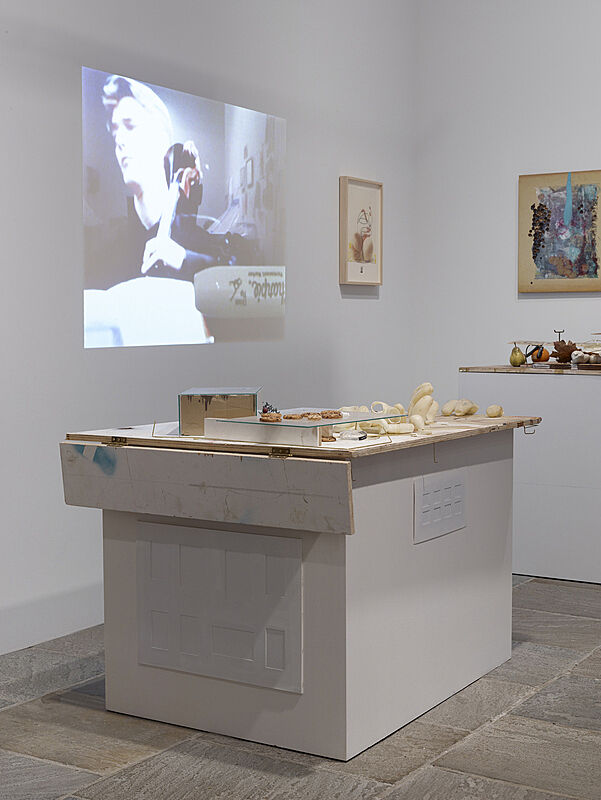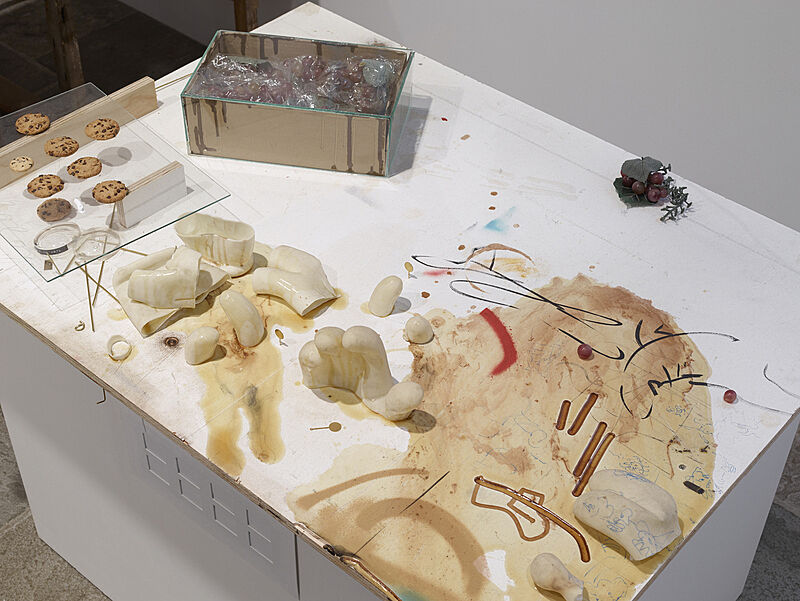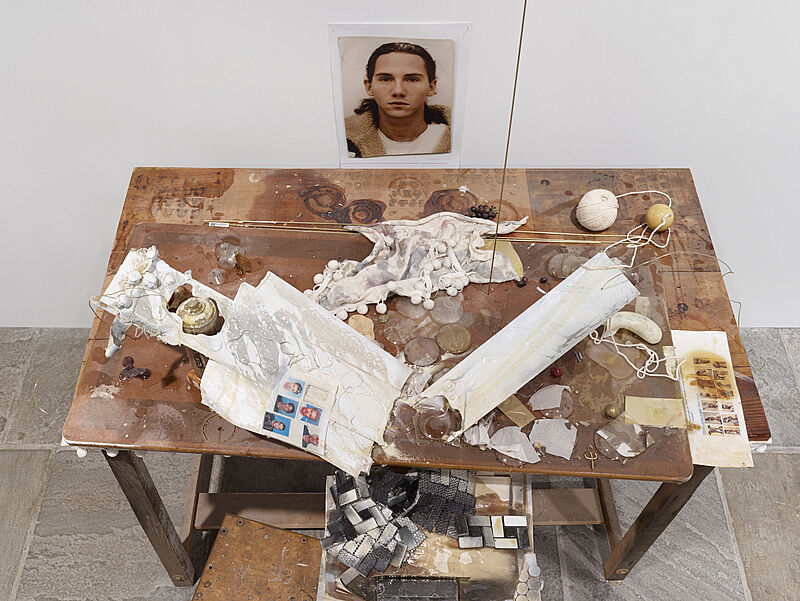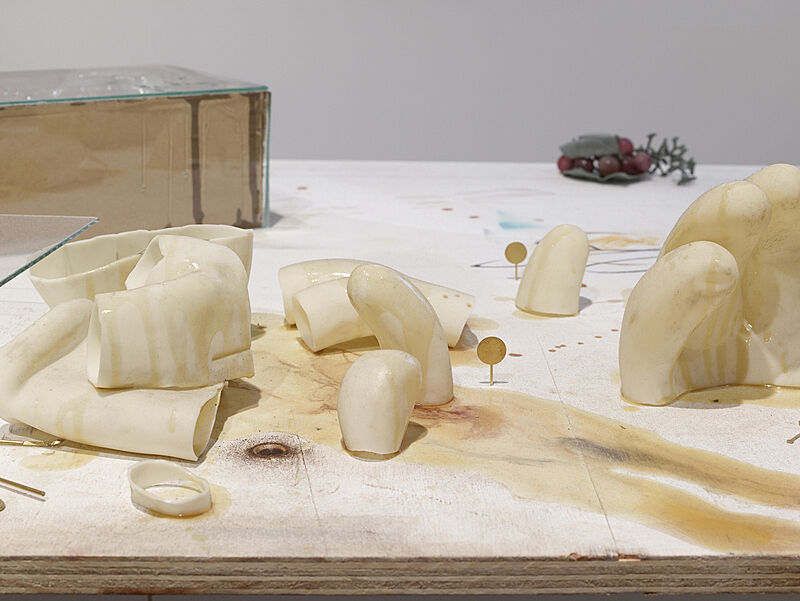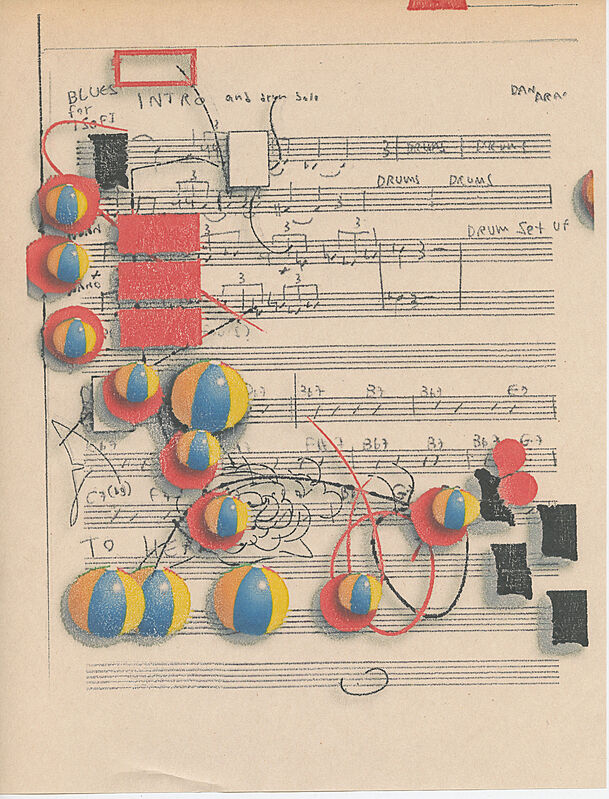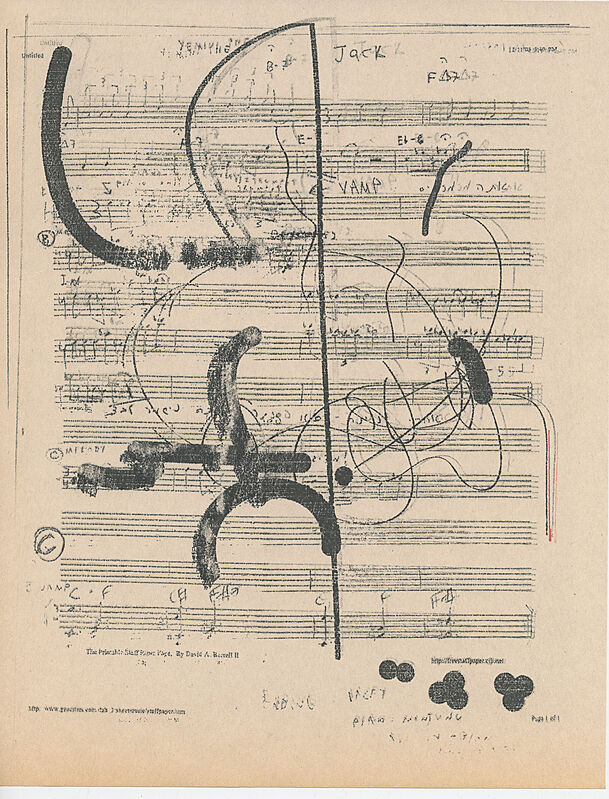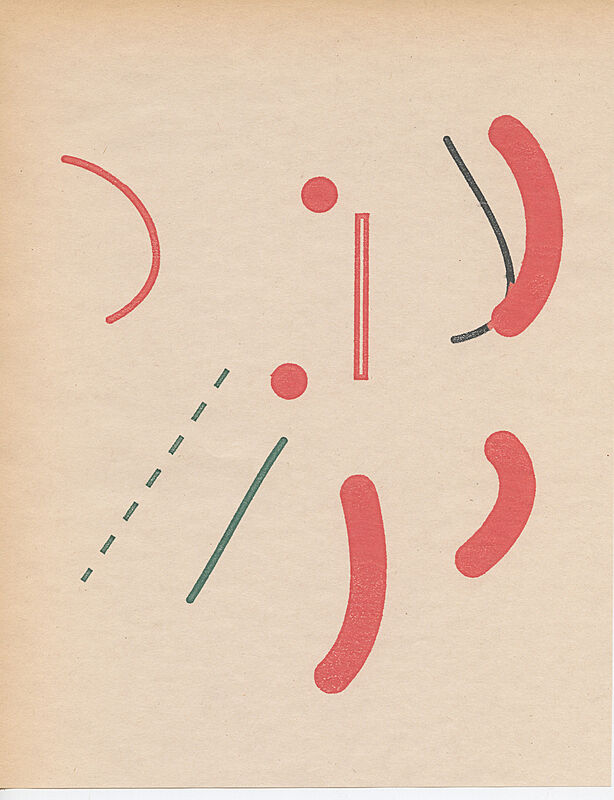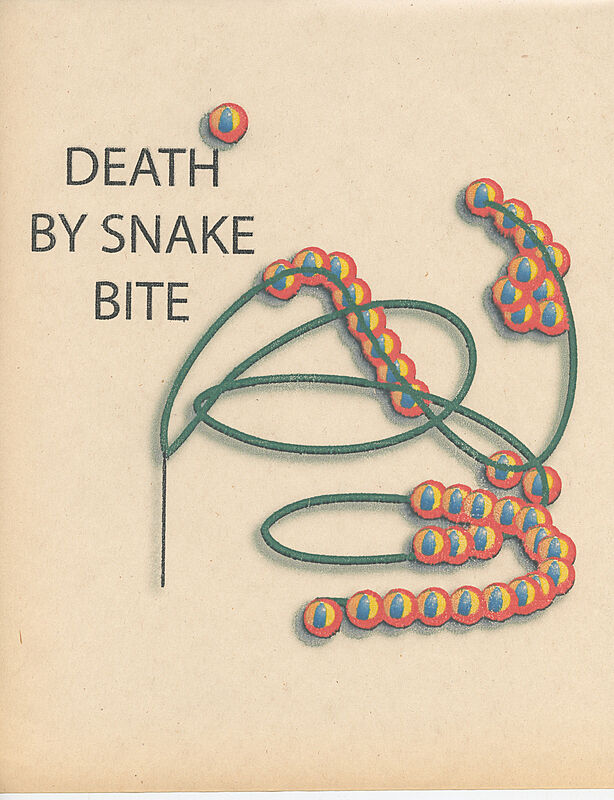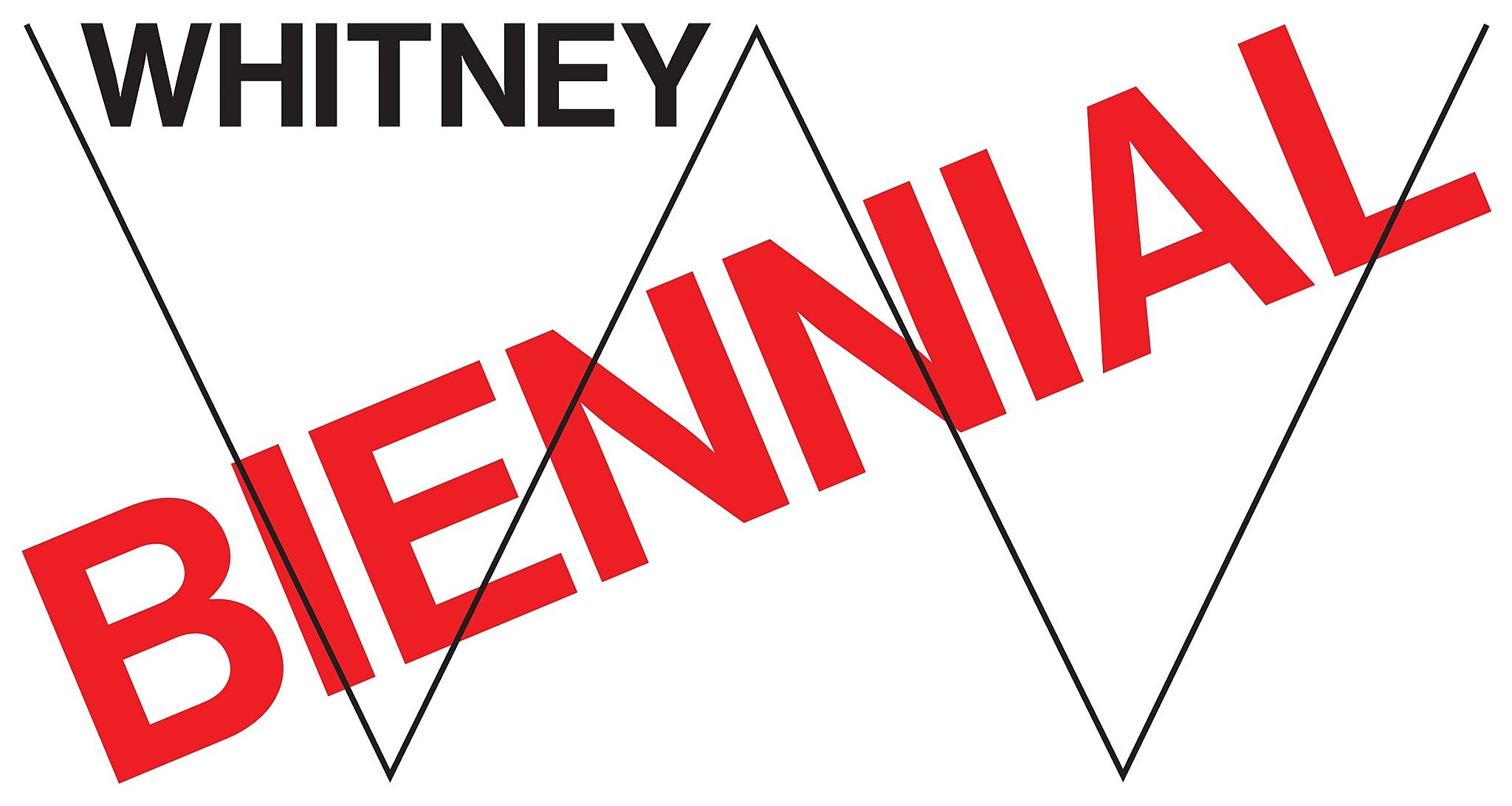Uri Aran
Born 1977 in Jerusalem, Israel
Lives and Works in New York, NY
Uri Aran’s installations collect objects and images, sculptural elements that are structured by the wall-mounted pedestals and worktables that provide the environment for the work. Unfolding like a theatrical storyboard, these configurations evoke fragments of narrative; standardized identification photographs dispersed within Aran's 2014 Biennial installation suggest half-formed characters. This sense of narrative is “not necessarily the classic notion of a story with a beginning, middle, and end,” as Aran has said, but rather a more open-ended landscape that proposes multiple routes or paths through the installation.
The investigation of language and its functions is fundamental to Uri Aran’s work: “The discord of meaning in language is something I’m interested in. I don’t know if it’s because English is not my mother tongue; I see a delay of meaning. I see things as mediated—almost everything is quoted.” In his video “A to Q,” an expressive, cinematic musical performance of Bachanias Brasileiras No. 1 by Brazilian composer Heitor Villa-Lobos (1887–1959) is juxtaposed with the artist’s presentation of prosaic objects, each introduced as representing a letter of the alphabet but demonstrating no discernible correlation between the objects and the letters they are meant to signify. Aran stops his recitation of the alphabet at “Q”—leaving this fundamental linguistic set incomplete. The artist’s work often hinges on such invented taxonomies, suggesting the pathos of organizing knowledge into legible systems.
On View
Third Floor
Uri Aran’s work is on view in the Museum’s third floor galleries.

